
Laser Therapy for Underarm Sweating
You may be familiar with the use of laser therapy to treat varicose veins, to perform delicate eye surgery, and to remove skin lesions.
But did you know that lasers are also used to treat excessive sweating (hyperhidrosis) of the underarms (axilla)?
A laser can be focused into a very narrow beam, enabling clinicians to target specific body structures without injuring surrounding tissue. This makes laser therapy both powerful and precise – much more precise, in fact, than more traditional surgical tools. The heat from lasers also helps to reduce infection risks and to seal blood vessels to help prevent bleeding. Laser procedures can, thus, be done faster with quicker recovery than some other types of procedures, and most are performed in a doctor’s office on an outpatient basis – meaning you can go home, or even back to work, soon after your treatment is over.
For the treatment of underarm sweating, lasers are useful in that they can precisely target, heat, and destroy the sweat glands, which are primarily found in a specific layer of tissue under the skin of the underarms. Tiny incisions (often so small they don’t even require a stitch) are made in the underarms to allow the laser tool to be passed under the skin. The procedure usually takes less than an hour to complete.
As you consider the information below, it is important to recognize that the studies so far regarding laser treatment for excessive sweating have been, for the most part, uncontrolled case reports involving relatively few patients. This means that the effectiveness of lasers (to treat sweating) is not as thoroughly proven and documented as that of other treatments.
In two studies, following a total of 33 patients over the course of six months, a single laser treatment session was shown to significantly reduce underarm sweating. The patients in the study received local numbing (anesthesia) to the underarms to minimize discomfort during the procedure. Side effects included swelling, bruising, and numbness, but these symptoms resolved after 1 to 2 weeks. Follow-up observations showed that both the eccrine glands (the sweat glands that produce clear, odorless, watery sweat) and the apocrine glands (the sweat glands that produce fatty sweat that becomes pungent when broken down by the skin’s normal bacteria) in the underarms had been ablated (or destroyed) by the laser treatment. Measurements taken six months after the treatment showed that underarm sweating was reduced by approximately 78%. Sweat glands are not believed to regenerate (or regrow) after they have been destroyed, so the benefits of laser treatment for excessive sweating are commonly regarded as permanent.
Laser technology can be expensive and, for this and other reasons, only a few doctors’ offices offer it. Additionally, insurance may not cover it, and not all healthcare providers are trained in how to do it. So, if you think you’d like to pursue laser treatment, ask around (and use our Clinician Finder) to find a dermatology office that’s equipped with laser technology. You’ll notice there are numerous brand names associated with lasers and that treatments may vary slightly. Ask your practitioner about his or her training and experience with lasers, the specifics of how the treatment will proceed, what safety measures you can expect (safety eyewear will be used, for instance) what temporary effects you might experience (such as swelling, bruising, and soreness) and when you can return to normal activities, including exercise. Often laser therapy is used as a sole treatment for underarm excessive sweating, but some providers may use lasers in combination with suction curettage. Ask your provider about his or her preferred technique.
Next Steps
Underarm surgery is just one of numerous treatment options for excessive sweating (hyperhidrosis). Typically, experts recommend that axillary hyperhidrosis patients try antiperspirants first (over-the-counter “clinical” strength and/or prescription formulations) and then, if needed, progress to other treatments such as Botox injections, Qbrexza, miraDry, Brella*, Sofdra or oral medications to treat hyperhidrosis. (*Please note that as of June 2025, Candesant Biomedical, the company behind Brella, is in the process of being sold. As a result, access to Brella is currently limited and may only be available through clinics that already have it in their inventory.)
Have you talked to your provider about excessive sweating? If not, now is the time! Learn more about how you and your healthcare team can work together to find the right treatment, or combination of treatments, to manage your hyperhidrosis. Our Clinician Finder can help you locate practitioners who treat hyperhidrosis. We also have information and resources to help you prepare for your appointment.
Have an informed discussion with your healthcare team by learning about all of the available treatment options for each of these body areas that may be affected by excessive sweating:
And remember, because hyperhidrosis is a serious medical condition - you deserve insurance coverage and reimbursement for your medical visits and treatment. We've got tips to help you navigate the health insurance realm; visit Insurance Tools for more information.
For the latest news about treatments, special events, and other developments, sign-up for our free blog. And please help to support our work by:
Research and References
Interested in reading what the medical literature has to say about lasers for hyperhidrosis? Here are links to relevant abstracts and articles published in medical journals:
Treatment of refractory axillary hyperhidrosis with a 1320-nm Nd:YAG laser
Carbon dioxide laser treatment vs subcutaneous resection of axillary osmidrosis
Laser therapy provides permanent solution to hyperhidrosis
Laser therapy improved severe hyperhidrosis
Latest Blogs